Calendar
Blacksmithing every third Saturday
Have you always wanted to learn about blacksmithing but you’ve had trouble finding a good option? Join our volunteer every third Saturday at Golden History Park for a fun morning of observation and learning about blacksmithing. Our recreated blacksmith shop, complete with historic tools and coal-fired forge, will transport you to the 1800s. Bring your technical questions and your camera and we’ll take care of the rest.
After you’re done at the park, swing by Golden History Museum to see our latest exhibits, open Saturdays until 4:30 p.m. Admission is free to the Park and the Museum.
Varied history opportunities await you
A variety of programs are offered throughout the year. Consider a membership to open the doors of special program pricing and other benefits like 10% off in the museum gift shop.
Lots of fun history opportunities await you in the Golden History Museum & Park online collection. We have approximately 15,000 items in our collection and you’re sure to find something that interests you about Golden.
Photo: Povy Kendal Atchison
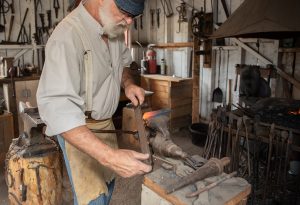
Practical Navigation
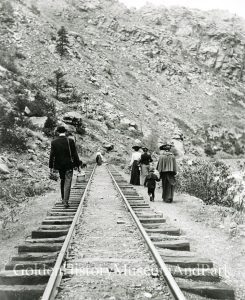 Join expert Aaron “Hutch” Hutchings as he teaches practical navigation skills, whether you are just taking a day hike or camping overnight. This class will teach you how to navigate on-trail or off-trail the next time you take a hike. Learn about your compass, make sure your phone is useful for wayfinding, and navigate when all you have is a trail map. Don’t worry about packing a calculator – this class will teach the simple, but realistic, navigational skills needed to find your way back to your car that you could have sworn was just around the next trail bend.
Join expert Aaron “Hutch” Hutchings as he teaches practical navigation skills, whether you are just taking a day hike or camping overnight. This class will teach you how to navigate on-trail or off-trail the next time you take a hike. Learn about your compass, make sure your phone is useful for wayfinding, and navigate when all you have is a trail map. Don’t worry about packing a calculator – this class will teach the simple, but realistic, navigational skills needed to find your way back to your car that you could have sworn was just around the next trail bend.
Aaron “Hutch” Hutchings is a Colorado native, veteran, and father of four. He was raised in the Rocky Mountains by a real mountain man and hunting guide he called Grandpa. His love for adventure was first sparked by his grandfather’s teaching and stories. This spark was blown into flame in the Boy Scouts and fanned to a full-on bonfire in the Marine Corps. Read more on Hutch’s website.
Tickets
GHM&P is transitioning to a new ticketing program. In the meantime, please contact us directly to register.
Outdoor Gear
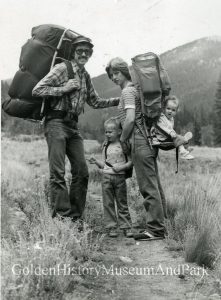 No escape to nature is complete without a trip to an outdoor recreational store or a browse through online offerings. Nowhere is this more true than in Colorado. Holubar, Gerry, and Frostline are among the outdoor companies that helped establish Colorado as a hub of innovation for the outdoor industry after World War II. Rachel S. Gross argues that the success of these outdoor gear pioneers was predicated not just on creating functional equipment but also on selling an authentic, anticommercial outdoor identity. In other words, shopping for the woods was also about being—or becoming—the right kind of person. Demonstrating that outdoor culture is commercial culture, Gross examines Americans’ journey toward outdoor expertise by tracing the development of the nascent outdoor goods industry, the influence of World War II on its growth, and the boom years of outdoor businesses.
No escape to nature is complete without a trip to an outdoor recreational store or a browse through online offerings. Nowhere is this more true than in Colorado. Holubar, Gerry, and Frostline are among the outdoor companies that helped establish Colorado as a hub of innovation for the outdoor industry after World War II. Rachel S. Gross argues that the success of these outdoor gear pioneers was predicated not just on creating functional equipment but also on selling an authentic, anticommercial outdoor identity. In other words, shopping for the woods was also about being—or becoming—the right kind of person. Demonstrating that outdoor culture is commercial culture, Gross examines Americans’ journey toward outdoor expertise by tracing the development of the nascent outdoor goods industry, the influence of World War II on its growth, and the boom years of outdoor businesses.
Rachel S. Gross is a historian of the outdoor industry. She is an Assistant Professor of History at the University of Colorado Denver where she teaches U.S. environmental, business, and public history. She is the author of Shopping All the Way to the Woods: How the Outdoor Industry Sold Nature to America (Yale University Press, 2024).
Tickets
GHM&P is transitioning to a new ticketing program. In the meantime, please contact us directly to register.
Underneath the Starry Flag
In 1898, the 1st Colorado Volunteer Infantry enlisted to fight the Spanish in Cuba, but instead raised the first American flag over Manila. With the war over, they hoped to return home, but the U.S. government had other plans. This talk describes the First Colorado’s role in the first year of the war in the Philippines. It also looks at their daily life and some challenges they faced. This was America’s first overseas war.
About the Presenter
Geoff Hunt earned his Ph.D. in Western American social history from the University of Colorado Boulder in 1996. His dissertation research led to Colorado’s Volunteer Infantry in the Philippine Wars, 1898-1899, published in 2006. After 22 years as Professor of History at the Community College of Aurora, he retired in 2019, and became a free-range historian.
Tickets
GHM&P is transitioning to a new ticketing program. In the meantime, please contact us directly to register.
Blacksmithing every third Saturday
Have you always wanted to learn about blacksmithing but you’ve had trouble finding a good option? Join our volunteer every third Saturday at Golden History Park for a fun morning of observation and learning about blacksmithing. Our recreated blacksmith shop, complete with historic tools and coal-fired forge, will transport you to the 1800s. Bring your technical questions and your camera and we’ll take care of the rest.
After you’re done at the park, swing by Golden History Museum to see our latest exhibits, open Saturdays until 4:30 p.m. Admission is free to the Park and the Museum.
Varied history opportunities await you
A variety of programs are offered throughout the year. Consider a membership to open the doors of special program pricing and other benefits like 10% off in the museum gift shop.
Lots of fun history opportunities await you in the Golden History Museum & Park online collection. We have approximately 15,000 items in our collection and you’re sure to find something that interests you about Golden.
Photo: Povy Kendal Atchison

A Campsite That’s Cozy
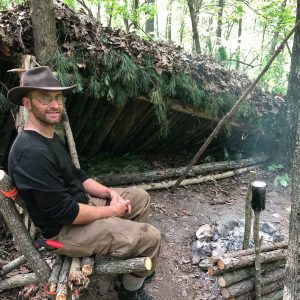 Join expert Aaron “Hutch” Hutchings in building a cozy home away from home while camping. This class will prepare you to stay warm and comfortable while sleeping outdoors or chatting around the campfire. Both historic and modern camp building skills will be taught. While everyone else shivers, you’ll be sleeping your cares away in your perfectly designed campsite.
Join expert Aaron “Hutch” Hutchings in building a cozy home away from home while camping. This class will prepare you to stay warm and comfortable while sleeping outdoors or chatting around the campfire. Both historic and modern camp building skills will be taught. While everyone else shivers, you’ll be sleeping your cares away in your perfectly designed campsite.
Aaron “Hutch” Hutchings is a Colorado native, veteran, and father of four. He was raised in the Rocky Mountains by a real mountain man and hunting guide he called Grandpa. His love for adventure was first sparked by his grandfather’s teaching and stories. This spark was blown into flame in the Boy Scouts and fanned to a full-on bonfire in the Marine Corps. Read more on Hutch’s website.
Tickets
GHM&P is transitioning to a new ticketing program. In the meantime, please contact us directly to register.
Dr. Rose Kidd Beere
Rose Kidd Beere was a doctor in Colorado in the nineteenth century. Born in Indiana and raised in western military posts, she attended Northwestern University Women’s Medical College. In 1892, she moved to Durango, Colorado, to practice medicine. In 1895 Governor Alva Adams asked her to take over the new State Home for Dependent and Neglected Children in Denver. Then in 1898 the United States went to war with Spain on the island of Cuba as well as in the Philippine Islands. The First Colorado Infantry went to the Philippines. She went, not as a doctor, but as a nurse. After a year, she returned to Denver where she was the health officer for the Denver Public Schools, setting up the first dental clinic for poor children. Then she was the doctor at the Poor Farm followed by running Denver General Hospital. Finally, in 1917 she opened a hospital to take care of soldiers coming home from the First World War.
About the Presenter
Rebecca A. Hunt received her Ph.D. in Western American social history from the University of Colorado Boulder in 1997. Her dissertation looked at ethnic groups in the Denver neighborhoods of Highland and Globeville. From 1992-94 Rebecca was co-chair of the statewide commemoration of the successful 1893 campaign to grant voting rights to Colorado’s women. Rebecca is on the historians’ council for History Colorado’s Center for Colorado Women’s History. In 2020 Rebecca retired from CU Denver and she is now a full-time writer. She writes a monthly column on the history of Denver’s NW side for the Denver North Star. Rebecca’s current book project is Urban Pioneers: Ethnic Identity and Community on Denver’s Northside.
Tickets
GHM&P is transitioning to a new ticketing program. In the meantime, please contact us directly to register.
Open house at Golden History Park
We’re ready to see you for our next Open House! See sparks fly at the blacksmith shop. Take a lesson at the schoolhouse or make a craft in the historic Reynolds Cabin. Explore the Pearce Cabin and learn how the woodstove works. There’s enough fun at the Golden History Park for the whole family!
Visit on select Saturdays from 10 a.m. to 2 p.m., May through August. Join in hands-on activities, learn about pioneer history from our interpreters, and see special demonstrations. See history in action and transport yourself to the 1800s!
After you’re done at the park, swing by Golden History Museum to see our latest exhibits, open Saturdays until 4:30 p.m. Admission is free to the Park and the Museum.
Varied history opportunities await you
Varied programs are offered throughout the year. Consider a membership to get special program pricing and other benefits like 10% off in the museum gift shop.
Further, lots of fun history opportunities await you in the Golden History Museum & Park online collection. There are about 15,000 items in our collection and you’re sure to find something that interests you about Golden.

Open house at Golden History Park
We’re ready to see you for our next Open House! See sparks fly at the blacksmith shop. Take a lesson at the schoolhouse or make a craft in the historic Reynolds Cabin. Explore the Pearce Cabin and learn how the woodstove works. There’s enough fun at the Golden History Park for the whole family!
Visit on select Saturdays from 10 a.m. to 2 p.m., May through August. Join in hands-on activities, learn about pioneer history from our interpreters, and see special demonstrations. See history in action and transport yourself to the 1800s!
After you’re done at the park, swing by Golden History Museum to see our latest exhibits, open Saturdays until 4:30 p.m. Admission is free to the Park and the Museum.
Varied history opportunities await you
Varied programs are offered throughout the year. Consider a membership to get special program pricing and other benefits like 10% off in the museum gift shop.
Further, lots of fun history opportunities await you in the Golden History Museum & Park online collection. There are about 15,000 items in our collection and you’re sure to find something that interests you about Golden.

Blacksmithing every third Saturday
Have you always wanted to learn about blacksmithing but you’ve had trouble finding a good option? Join our volunteer every third Saturday at Golden History Park for a fun morning of observation and learning about blacksmithing. Our recreated blacksmith shop, complete with historic tools and coal-fired forge, will transport you to the 1800s. Bring your technical questions and your camera and we’ll take care of the rest.
After you’re done at the park, swing by Golden History Museum to see our latest exhibits, open Saturdays until 4:30 p.m. Admission is free to the Park and the Museum.
Varied history opportunities await you
A variety of programs are offered throughout the year. Consider a membership to open the doors of special program pricing and other benefits like 10% off in the museum gift shop.
Lots of fun history opportunities await you in the Golden History Museum & Park online collection. We have approximately 15,000 items in our collection and you’re sure to find something that interests you about Golden.
Photo: Povy Kendal Atchison

Open house at Golden History Park
We’re ready to see you for our next Open House! See sparks fly at the blacksmith shop. Take a lesson at the schoolhouse or make a craft in the historic Reynolds Cabin. Explore the Pearce Cabin and learn how the woodstove works. There’s enough fun at the Golden History Park for the whole family!
Visit on select Saturdays from 10 a.m. to 2 p.m., May through August. Join in hands-on activities, learn about pioneer history from our interpreters, and see special demonstrations. See history in action and transport yourself to the 1800s!
After you’re done at the park, swing by Golden History Museum to see our latest exhibits, open Saturdays until 4:30 p.m. Admission is free to the Park and the Museum.
Varied history opportunities await you
Varied programs are offered throughout the year. Consider a membership to get special program pricing and other benefits like 10% off in the museum gift shop.
Further, lots of fun history opportunities await you in the Golden History Museum & Park online collection. There are about 15,000 items in our collection and you’re sure to find something that interests you about Golden.

Open house at Golden History Park
We’re ready to see you for our next Open House! See sparks fly at the blacksmith shop. Take a lesson at the schoolhouse or make a craft in the historic Reynolds Cabin. Explore the Pearce Cabin and learn how the woodstove works. There’s enough fun at the Golden History Park for the whole family!
Visit on select Saturdays from 10 a.m. to 2 p.m., May through August. Join in hands-on activities, learn about pioneer history from our interpreters, and see special demonstrations. See history in action and transport yourself to the 1800s!
After you’re done at the park, swing by Golden History Museum to see our latest exhibits, open Saturdays until 4:30 p.m. Admission is free to the Park and the Museum.
Varied history opportunities await you
Varied programs are offered throughout the year. Consider a membership to get special program pricing and other benefits like 10% off in the museum gift shop.
Further, lots of fun history opportunities await you in the Golden History Museum & Park online collection. There are about 15,000 items in our collection and you’re sure to find something that interests you about Golden.

Open house at Golden History Park
We’re ready to see you for our next Open House! See sparks fly at the blacksmith shop. Take a lesson at the schoolhouse or make a craft in the historic Reynolds Cabin. Explore the Pearce Cabin and learn how the woodstove works. There’s enough fun at the Golden History Park for the whole family!
Visit on select Saturdays from 10 a.m. to 2 p.m., May through August. Join in hands-on activities, learn about pioneer history from our interpreters, and see special demonstrations. See history in action and transport yourself to the 1800s!
After you’re done at the park, swing by Golden History Museum to see our latest exhibits, open Saturdays until 4:30 p.m. Admission is free to the Park and the Museum.
Varied history opportunities await you
Varied programs are offered throughout the year. Consider a membership to get special program pricing and other benefits like 10% off in the museum gift shop.
Further, lots of fun history opportunities await you in the Golden History Museum & Park online collection. There are about 15,000 items in our collection and you’re sure to find something that interests you about Golden.

Open house at Golden History Park
We’re ready to see you for our next Open House! See sparks fly at the blacksmith shop. Take a lesson at the schoolhouse or make a craft in the historic Reynolds Cabin. Explore the Pearce Cabin and learn how the woodstove works. There’s enough fun at the Golden History Park for the whole family!
Visit on select Saturdays from 10 a.m. to 2 p.m., May through August. Join in hands-on activities, learn about pioneer history from our interpreters, and see special demonstrations. See history in action and transport yourself to the 1800s!
After you’re done at the park, swing by Golden History Museum to see our latest exhibits, open Saturdays until 4:30 p.m. Admission is free to the Park and the Museum.
Varied history opportunities await you
Varied programs are offered throughout the year. Consider a membership to get special program pricing and other benefits like 10% off in the museum gift shop.
Further, lots of fun history opportunities await you in the Golden History Museum & Park online collection. There are about 15,000 items in our collection and you’re sure to find something that interests you about Golden.

The Boer War and America
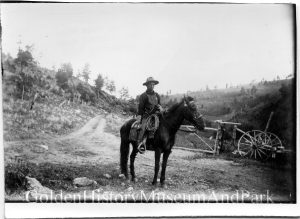 Moore will speak on a little discussed aspect of world history – America and the Boer War. Around 1900 the British had wars going throughout their Empire. The major action was in southern Africa, the Boer War. Of course, the Boers, farmers of northern European descent, fought for their way of life and homeland. To support the action, the Royal Army sought horses wherever possible. The British government bought some 250,000 horses and mules in the US. They were consolidated, entrained, and sent to New Orleans. Ships carrying 1,000 horses sailed to Africa almost daily. There was active opposition to the war in the US and elsewhere.
Moore will speak on a little discussed aspect of world history – America and the Boer War. Around 1900 the British had wars going throughout their Empire. The major action was in southern Africa, the Boer War. Of course, the Boers, farmers of northern European descent, fought for their way of life and homeland. To support the action, the Royal Army sought horses wherever possible. The British government bought some 250,000 horses and mules in the US. They were consolidated, entrained, and sent to New Orleans. Ships carrying 1,000 horses sailed to Africa almost daily. There was active opposition to the war in the US and elsewhere.
Stan Moore is an author, speaker and historian. He has been described several ways. The repeatable ones include: husband, father and grandfather; author and speaker; retired small business owner; CU graduate; third generation Coloradan; hiker, backpacker and mountaineer; Vietnam veteran; hobbyist blacksmith. He and his wife make home near Denver with a cat who lets them stay there. He is the author of six books, one history and five historical novels set around 1900s Colorado.
Tickets
GHM&P is transitioning to a new ticketing program. In the meantime, please contact us directly to register.
